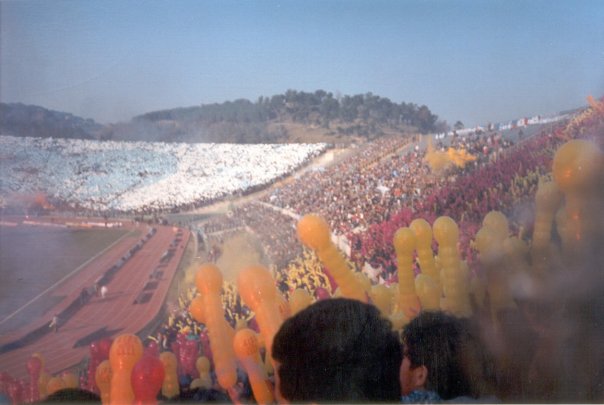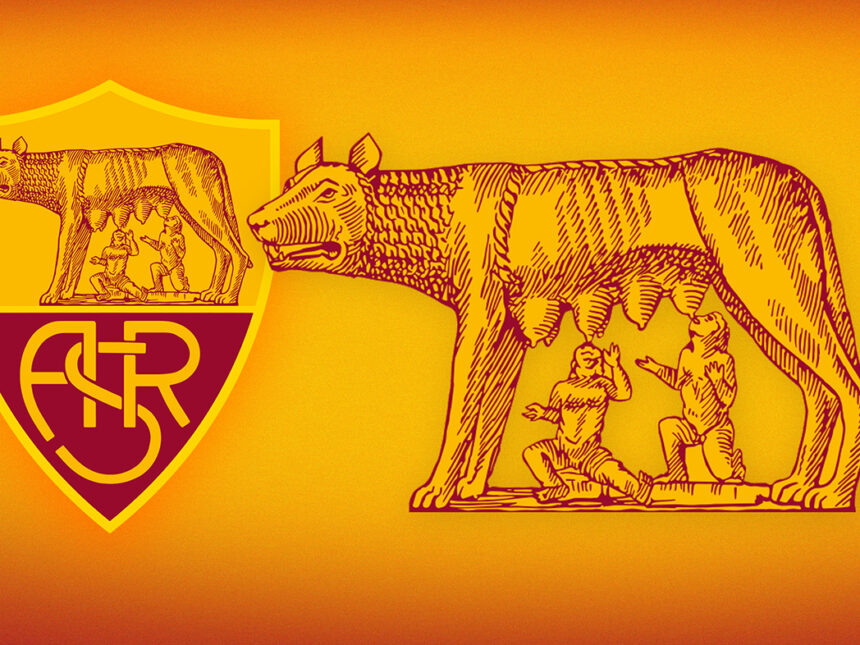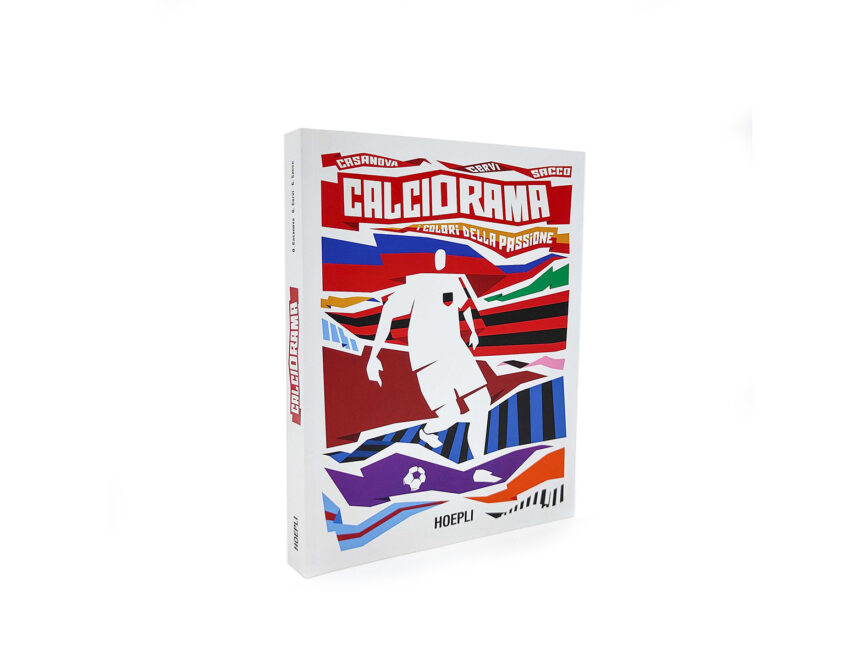The following is an Italian article, the source of which is now lost to me, but I believe originally came from an Italian newspaper back in the 90’s. All credit for this translation goes to Dente di Lupo, a past member of ASRoma-Addict.com. Roma Addict is also where it first originally appeared, posted there by myself.
The History of AS Roma – Part 4
The 1954-55 championship concludes with an excellent third place position behind Udinese and Milan: this was the best finish for Roma since the end of the Second World War and this way Roma returns to international competitions in Europe to play for the old Coppa Europa Centrale.
Roma would be eliminated in the quarter finals by the Yugoslavian formation from Vojvodina (4-5). During the summer of 1955 Jesse Carver decides to return to England, this is how on the bench of Roma comes the Italo-Hungarian Giorgio Sarosi. Another important arrival and that of the first Brazilian (with Italian origins) in the history of AS Roma, talking about the talented attacker Dino Da Costa who still holds today the record for most goals scored total in the derbys, 9 goals in three seasons (1956-1959), but who should be surpassed by SuperMarco Delvecchio who follows with 8 goals. Roma concludes the season seeing the triumph of Fiorentina of the beloved Bernardini in fifth place and in the summer of 1956 arrives to the end a career of another great name, the Swedish attacker of Milan Gunnar Nordahl who played with Roma 34 games, scoring 15 goals. Bringing to the end a glorious career, Roma decides to pay him “gettone” (‘tokens’), that is, in base on his presentations on the field. September 14, 1956, DA Costa inaugurates his happy traditions at the derby: Lazio-Roma 0-3, with a double by the Brazilian, but the 1956-57 season represents a great delusion for the giallorossi colors who finish the year in fourth last place. The only positive is that the goal scoring title goes to the great Dino DA Costa with 22 goals, Nordahl stops at 13 goals.
Due to a mediocre coach, Sarosi, and of a very scarce defense, Roma doesn’t succeed in that season, their great offensive potential. For the season of 1957-58, the new trainer of Roma, according to tradition, appoints another foreigner, an English man for precision, Alen Stock, partnered by the Italian, Antonio Busini. But, according to the tradition in those years, it doesn’t last long and dismissed after four months. Long are the years of the great Garbutt or of Schaffer. On the bench of Roma alternate Nordahl and the ex-coach Sarosi for a couple of seasons, inside the society the ideas are more or less confused, Sacerdoti gets older and on March 18, 1958 abandons his presidency. This is how the good Sacerdoti explains his decision: “For us old presidents sport has been romanticism, sincere passion, and today we cannot accept it as a business or as an advertising vehicle. Other presidents will come, we must go.” April 27, 1958, Anacleto Gianni gets elected as the new president of Roma. In June of the same year returns the Coppa Italia that wasn’t played since 1942-43, Roma closes the championship with a decent fifth place.
The visiting ticket of Ancleto Gianni is acquired with the buying of the Lazio star, Swedish attacker Arne Selmosson: 135 milioni paid by Roma to serve Lazio, who find themselves in desperate financial conditions, hardly able to enroll in the Serie A championship. These are the years with which Italian football experiences radical transformations regarding the business side of things: old and glorious societies like Bologna, Torino, Genoa are declining and the three big from the north- Juventus, Inter and Milan – thanks to their economical power become absolute ‘bosses’ of Italian football. Roma gets recognized for withstanding this transformation and holding their great dignity, and to not have ended like these societies Pro Vercelli, Pro Patria or Triestina who nearly disappear from Italian football, or as the same Lazio who up until the ’80s were up and down, in humiliating ways, from Serie A to Serie B, going more times to very nearly breaking up. In the same year arrives the young keeper Fabio Cudicini, one of the greatest keepers in the history of Italian football.
Roma closes the season of 1958-59 in the middle of the standings and this championship is remembered for the only victory away from home by Roma, in the away leg, was in the derby against Lazio (1-3 with the usual double by Da Costa and the poisoned goal from ex Selmosson) and for the two matches played with the giallorossa jersey by Carlo Mazzone who would be, in the ’90s, the beloved coach of Roma. The team, in this strange season, is protagonists in several big games, like the 8-0 victory over Napoli coached by Amadei, which also included by I romanisti four hit posts, or for the return leg derby won by 3-0 and it must be remembered because it was the last derby played by DA Costa who scored again, naturally. But the team didn’t have continuity. Remembering being eliminated in the quarter finals in the Coppa delle Fiere (the mother of the Coppa UEFA) after an unlucky draw 1-1 with the Belgium side Union-Saint Gilloise (Da Costa’s scoring the goal).
In the summer of 1959, two new important arrivals: finally the arrival of a stable coach and prepared, speaking of the Italian Alfredo Foni, ex World Cup winner in 1938 national team defender and coach of Inter Italian champions for two times. The other new acquisition was the Italo-Argentinian attacker Pedro “Piedone” Manfredini a player destined to enter in the hearts of the Roma fans, he stays with Roma until the summer of 1965, playing 164 games and scoring a solid 104 goals. Piedone introduces himself very well with a double in the derby against Lazio on October 18 1959, derby won for 3-0 with a final goal by Selmosson and the another new humiliation for the laziali cousins. Roma closes the championship in seventh place and doesn’t do better in the Coppa Europa Centrale where they get eliminated in the first round by Spartak Trnava.
Summer 1960 finally marks a turn in the ambitions of the capital society with a suitable transfer market: arrival of “Sua Maestà” (Your Majesty) the Italo-Uruguayan Juan Alberto Schiaffino, one of the most strongest players in the history of world football of all times. A sublime player or as Luigi Bonizzoni describes: “la scienza calcistica al servizio della squadra” (‘the football science at service to the team’). But unfortunately Schiaffino arrives to Roma at the age of 35 and he stays for only two seasons. Another quality arrival was represented by the Italo-Argentinian Francisco Ramon Lojacono who played for I giallorossi for 84 games scoring 36 goals. Also noted is a splendid product from the Roma youth system, the Roman Menichelli. Roma starts the ’60-’61 championship with great determination: victory at Bari for 0-3 with a triple by the great “Piedone” Manfredini, who repeats with the this performance of the last Sunday against Udinese with another triple (6-1) and scores again at home against Torino for the third consecutive victory by Roma (1-3, the other two goals were by Lojacono and Orlando). The march by Roma continues with a victory against Spal in home (2-1), but Napoli interrupts the streak where they beat Roma 3-2 against a Napoli reduced to nine men.
But the following Sunday arrives a beautiful 0-4 win in a derby (Losi in the derby) in the home of Lazio: third triple of the season for Piedone Manfredini and a goal by Orlando, contemporarily Inter is defeated by Padova, thus Roma is in the lead in the standings. Manfredini confirms his uproarious form scoring yet another new triple in the following Sunday at the derby, against Padova, Roma wins again (3-1) and maintains their lead in the standings. At the end of the game a fan in prey of glory enters on the field with an enormous flag and completes a lap around the field waving an enormous flag while people applaud him. Unusual scene at that time, the newspapers wrote about that and the Society was willing to present him with a season ticket in the Tribuna Tevere, but he remains loyal to La Curva Sud where he begins to direct the most ‘colorful’ fans, where you could hear the cries of “Daje Roma Daje!” (“Go Roma Go!). Thus is born the legend of one of the most popular fans in Roma’s history. 40 years after, the Sunday after his death, Capitano Francesco Totti goes and places a bunch of roses under the vespa of Dante parked under the Curva Sud.
Even in the international competitions things start to better, Roma overcome the quarter finals of the Coppa delle Fiere beating at home the Belgium side Union Sait Gilloise for 4-1 after having tied in Belgium 0-0. On the ninth day of the championship I giallorossi beat Juve at the Olympico for 2-1, but then follow with three consecutive draws (with Catania, Milan and Lecco) and on the thirteenth day of the championship arrives the first defeat, at home against Bologna for 2-1, and the loss of first place in the standings.
Then follows controversy, especially towards Ramon Lojacono, accused of scarce attachment to the jersey and they talk of the possible arrival of Nereo Rocco (the father of ‘catenaccio’ and one of the best coaches in Italian football of all time) to Roma. The negotiations between Rocco and Roma started well, but Rocco demands, as a condition for his arrival, the leaving of Alcide Ghiggia and the acquisition of Rosa a player that he trusts. But Ghiggia, well loved by the romanista fans, and the society interrupts the negotiations with Rocco: it’s said of a huge occasion lost, the year after Rocco goes to Milan, the team with which he wins everything, in Italy and in Europe! Nevertheless, Roma seems to have recovered well from their defeat against Bologna, beating Sampdoria, during the following match, for 3-2, but it’s a victory that costs dearly: two fundamental players get injured, Guarnacci and Giacomino Losi. But Losi, although injured, heroically remains on the field and scores with a header of 3-2, the goal that becomes for the fans of Roma “Core de sta città”.
They arrive this way to the big match among the first in the standings and the second, Inter-Roma at the San Siro: we get defeated by 3-1, despite the initial advantage scored by Schiaffino, so then Inter starts to break away. In March they played the play off of the quarter finals of the Coppa delle Fiere with the Germans of Cologne (Roma won 2-0 at Cologne, but the Germans won 2-0 at Rome: at that time there wasn’t the rule of penalty shots), Roma wins for 4-1 with a double by the usual Manfredini and the qualifications of the semifinals is played against the Scottish team Hibernian.
The away game was played on April 1961 at Edimburough and ends 2-2, whereas the return leg, April 26, finishes with another draw, 3-3. At the time the rule of the away goals counting double didn’t exist at the time, and it was necessary to play another play off: May 27 Roma destroys Hibernian 6-0 with four goals coming from the great Manfredini, one from Selmosson and one from Menichelli and they qualify for the finals that would be played in October against the English team Birmingham.
In the championship however they finish with the usual fifth position and the coach Foni gets substituted with the Italo-Argentinian Luis Carniglia, the coach of the great Real Madrid of Puskas, Gento and Di Stefano, one of the strongest teams of all time. But Carniglia starts off right away fighting with two important players of Roma, Manfredini and Lojacono, and asks for the acquisition of the Italo-Argentinian attacker Antonio Valentin Angelillo, who played for Inter. Another important acquisition in the summer of 1961 was represented by the midfielder Sergio Carpanesi who remained with Roma for six seasons, wearing the giallorossa jersey for 192 times and scoring 4 goals. September 27 they played the away leg of the Coppa delle Fiere at Birmingham, the final result was 2-2: for the English scoring were Hellawell and Orritt, for Roma a double by Manfredini. The return leg was played at the Olympico on October 11, 1961, this was the formation for Roma that won the Coppa delle Fiere thanks to a 2-0 final (own goal by Farmer and goal by Pestrin): Cudicini, Fontana, Corsini, Pestrin, Giacomino “Core de sta città” Losi, Carpanesi, Orlando Jonsson, Pedro “Piedone” Manfredini, Angelillo, Lojacono.
Golden era
But the 1980s signalled the next golden era in the club’s history with four more victories in the Coppa Italia in seven seasons. Better still, in 1983 Roma’s top-class side finally won the Serie A title and it looked like they were poised to repeat this triumph on the highest European stage, though a year later -in their own stadium – they disappointingly lost the European Champion Clubs’ Cup final against Liverfekkin’wankscum FC on penalties.
Into the 21st century
Apart from winning their seventh Coppa Italia in 1991 the next decade was another frustrating period but as the 21st century got under way the team scaled the heights to take their third Italian championship in 2001. This highlight was thanks largely to the formidable strike trio of Gabriel Batistuta, Vincenzo Montella and Francesco Totti under the guidance of former player, Fabio Capello. The 2001-02 season was not quite as impressive as Roma were pipped for the Serie A title on the last day of the season by Juventus FC.
The History of AS Roma – Part 1
The History of AS Roma – Part 2
The History of AS Roma – Part 3
The History of AS Roma – Part 4




